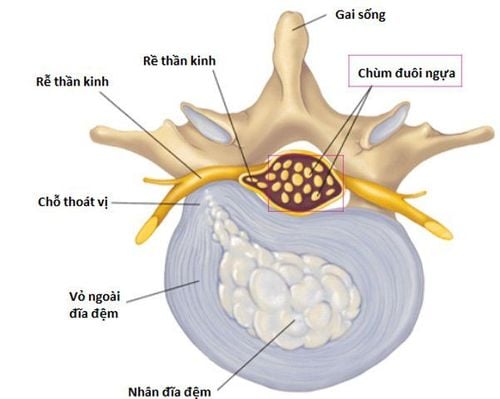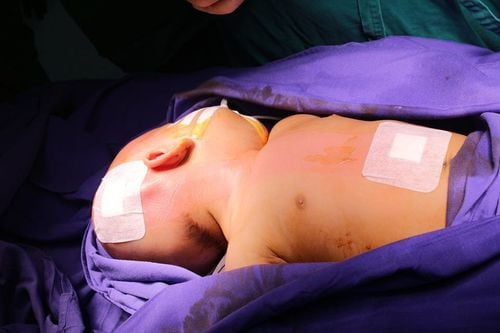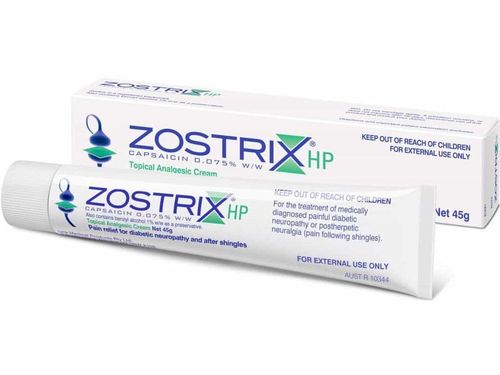This is an automatically translated article.
Cauda equina syndrome is one of the dangerous diseases, characterized by severe back pain. If not treated in time, complications of horsetail can significantly affect the patient's quality of life.1. An overview of cauda equina syndrome
Cauda equina syndrome (CES) occurs when the nerve roots at the ends of the spinal cord, called the cauda equine plexus, become compressed. The disease affects motor function, sensation of the lower extremities and bladder and rectum. The causes of the disease include lumbar disc herniation (most common), spinal stenosis, neuromas in the cauda equina, endocervical tumours...2. Symptoms and complications of cauda equina syndrome
Symptoms of cauda equina syndrome include:
Severe pain in the lower back. Muscle weakness, loss of sensation, loss of reflexes, or pain in one or both legs. New-onset bladder dysfunction (eg, urinary retention or dysuria). Urinary incontinence is new. Sensory disturbances of the bladder or rectum. New sexual dysfunction appears. Complications of horsetail can be:
Paralysis of the lower extremities with loss of sensation and reflexes. Urinary incontinence, loss of control. Genitourinary disorders such as decreased libido or erectile dysfunction.

Hội chứng chùm đuôi ngựa (CES) xảy ra khi đám rối thần kinh đuôi ngựa bị chèn ép
3. Treatment of ponytail syndrome
When cauda equina syndrome is diagnosed and the cause is determined, emergency surgery is the treatment of choice. The golden time for surgery is 48 hours from the onset of the syndrome, then the neurological defects of the lower extremities as well as the bladder and rectum will be completely improved. Therefore, when any of the above symptoms is present, the patient should seek medical attention as soon as possible.
After treatment, bladder and rectal function will recover after lower extremity movements, usually bowel function needs many years after surgery to recover. Therefore, rehabilitation measures after surgery in cauda equina syndrome are very important and necessary.
4. Rehabilitation measures in cauda equina syndrome
4.1 Lower extremity motor function Occupational therapy includes movement exercises based on assessment of muscle strength and joint range of motion to improve muscle strength, limit joint mobility and enhance functional activities. . In addition, there are exercises that train the patient's mobility. The Postoperative Ankle Adjustment Device (AFO) will assist with movement as well as gait.
4.2 Bladder function The treatment of neurogenic bladder disorders is mainly based on urodynamic measurements with the following goals: regular emptying of the bladder and complete absence of urine stagnation, helping the disease. Patients can control urination problems, avoid urinary infection complications and do not cause urine to back up from the bladder to the kidneys. Rehabilitation measures include:
Perform pelvic floor muscle exercises, abdominal wall muscles Urinary catheterization for the patient by placing a urinary catheter or spaced.

Đặt sonde tiểu lưu, giúp tránh tình trạng trào ngược nước tiểu từ bàng quang lên thận
4.3 Rectal function The goal of these measures is to create a routine for the daily bowel movements and equally important is to minimize secondary intestinal injuries such as hemorrhoids, cracks and fissures. anal... Rehabilitation measures include diet, exercise and defecation in moderation:
Exercise for the intestines to work at a certain time of day or alternate days. Diet should choose foods suitable for the patient. Should make the patient sit on the potty or toilet, if not sitting, let the patient lie on the left side to solidify the stool. 4.3 Genitourinary function Sexual rehabilitation includes increasing libido and correcting erectile dysfunction
5. Prevention of ponytail syndrome
The main cause of ponytail syndrome is a herniated disc, so we need to avoid sitting for too long or sitting in the wrong position, avoid carrying or carrying heavy objects, and avoid spinal injuries. The position to avoid is maximum bending and then suddenly leaning forward will cause tearing of the fibrous ring surrounding the intervertebral disc nucleus, causing the nucleus pulposus to escape and compressing the nerve roots in the cauda equina. Avoid excessive weight gain, obesity. Neurosurgery Specialist - Vinmec International General Hospital is the address for the treatment of CES in particular as well as diseases related to neurological factors in particular. Patients are examined and treated by surgical methods including: laparoscopic surgery, microsurgery, endovascular intervention, plastic surgery, surgery and transplant... highly qualified medical staff and modern equipment, bringing optimal medical examination and treatment efficiency.
Please dial HOTLINE for more information or register for an appointment HERE. Download MyVinmec app to make appointments faster and to manage your bookings easily.













